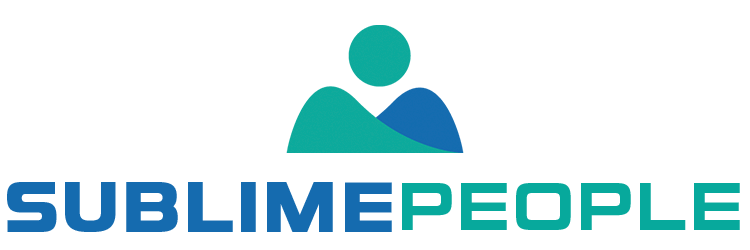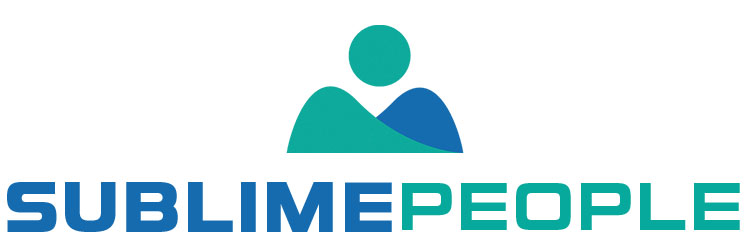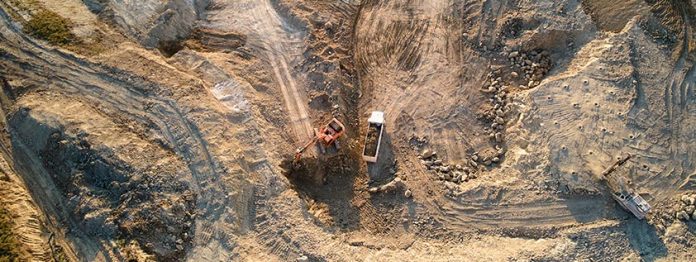Mining is an industry that involves extracting resources from the earth. These resources can be anything from coal and natural gas to gold and silver. The mining industry has been around for centuries, and it produces some of the world’s most valuable resources.
The industry provides the raw materials that are used in a wide variety of industries, from construction to manufacturing to electronics.
In this Article:
What does the mining industry mean?
The mining industry refers to the businesses, and individuals involved in the extraction of precious minerals and other geological materials. They then processed these items into a mineralized. Mining provides the raw materials for a variety of industries, including construction, manufacturing, and agriculture.
What are some of the most important minerals mined?
Some of the most important mined minerals include coal, iron ore, copper, oil, and gold. These minerals are essential for a variety of industries, including power generation, construction, and manufacturing.
Mining companies often sell their products to metal refineries and then turn them into usable objects like cars or phones.
What is the biggest mining industry?
The biggest mining industry is the coal mining industry. Coal India, the world’s largest producer of steam coal, is also enjoying a bull market, up over 32% in 2022. Coal India has large amounts of coal mines, which employ over half a million people.
Categories of the mining industry
The mining industry can be divided into several categories, based on the type of minerals that are extracted. These categories include:
Metals Mining
This category includes businesses and individuals involved in the extraction of metals, such as metallic ores, iron, copper, and gold.
Non-metallic Minerals Mining
This category includes businesses and individuals involved in the extraction of non-metallic minerals, such as sand, gravel, and limestone.
Energy Minerals Mining
This category includes businesses and individuals involved in the extraction of energy minerals, such as coal and natural gas.
Precious Metals Mining
This category includes businesses and individuals involved in the extraction of solid minerals, such as gold and silver.
How does the mining industry work?
The mining industry comprises five basic stages: exploration, discovery, development, production, and reclamation.
Exploration
The first stage of the mining process is exploration, where companies survey an area to find mineral deposits. This stage can be expensive, and it often requires advanced technology, such as seismic surveying or geochemical analysis.
Discovery
Once a potential deposit is found, companies will conduct further studies to determine if it is economically viable to extract the minerals. This stage can involve drilling, sampling, and other forms of investigation.
Mine planning and development
The next stage is mine planning and development, where companies develop a plan to extract the minerals. This stage can take many years, and it often requires significant investment. This process can involve building roads, power lines, and other infrastructure. It can also involve extracting minerals from the ground.
Production
After the development stage, companies will produce minerals from the mine. This stage of the mining process can involve smelting, refining, and other forms of processing.
Reclamation
After the extraction of the minerals from the ground, companies will reclaim the land. This process can involve replanting vegetation, constructing buildings, and other activities.
What helps the global mining industry successfully operate?
A variety of factors help the global mining industry to operate. These factors include:
The availability of minerals
Minerals are the key raw materials for the mining industry. As demand for minerals continues to grow, so do concerns about the sustainability and ethical responsibility of extracting them. The industry, therefore, requires a steady supply of minerals to operate successfully.
Technology
Mining companies must also have access to the mining technology that allows them to plan and monitor their operations, as well as monitor and maintain equipment.
Using advanced equipment and machinery not only increases efficiency but also improves safety standards for workers. In addition, modern technologies like remote sensing and geographic information systems allow for more precise and sustainable extraction processes.
Communication technology, such as smartphones and the internet, also enables miners to coordinate with each other and keep in contact with headquarters.
Investment
The mining industry requires a significant amount of capital to finance operations. Investors who expect a return on their investment through the sale of minerals or other products produced by the mining industry typically provide this capital.
Electricity
The mining industry consumes a large amount of electricity to power machinery and equipment.
skilled Labor
One of the most important elements for successful mining operations is skilled and trained workers. Mining involves a variety of specialized activities, from operating heavy machinery to analyzing geological data. In order for these tasks to be performed safely and efficiently, workers need to have comprehensive training and experience in their respective roles.
What are the mining methods used in the mining
Major mining companies use various mining methods, that include:
Surface mining
Surface mining is the most common method used in mining operations. Surface methods use large machines to remove the top layer of the earth to uncover the minerals below.
Underground mining
Underground mining is the process of extracting resources from beneath the earth’s surface. Underground mines include things like gold and silver mining.
Open pit mining:
This is an extraction process which involves making an excavation in the form of a pit to extract coal or other minerals.
Drift mining
This is a type of underground mining that involves excavating a tunnel into the side of a mountain to reach the desired mineral deposit.
Room and pillar mining
This is a method of extracting coal by creating a system of rooms and pillars. The rooms are used to support the roof of the mine, and the pillars are used to hold up the roof.
Placer Mining
Placer mining is a type of mining industry that involves the extraction of minerals or other materials that are found in deposits of sand or gravel. Placer mining is typically used to extract gold from riverbeds or beaches.
Hydraulic Mining
Hydraulic mining is a type of mining industry that uses high-pressure water jets to break up rock and loosen deposits of minerals or other materials. Hydraulic mining is typically used to extract gold from placer deposits.
Solution Mining
Solution mining is a type of mining industry that involves the extraction of minerals or other materials that are dissolved in water. Solution mining is typically used to extract salt or potash from underground deposits.
Quarrying
Quarrying is a type of mining industry that involves the extraction of stone or other materials from quarries. Quarries are typically used to extract building materials such as marble, granite, limestone, and sandstone.
Strip Mining
Strip mining is a type of surface mining that involves the removal of large strips of land in order to access underlying mineral deposits. Strip mines are typically used to mine coal and other non-metal minerals.
Examples of mining industry operating assets
The mining industry is a large and complex one, with many types of operating assets. These assets can include anything from mineral deposits to mining equipment and machinery. Examples of mining industry operating assets include:
Coal mines
Coal is a fossil fuel that is burned to generate electricity. Coal mining involves extracting coal from the ground. Coal mines can be underground mines or surface mines. Underground mines are more expensive to operate than surface mines.
Gold mines
Gold is a precious metal that is used in jewelry and electronic devices. Gold mining involves extracting gold from the ground. Gold mines can be open-pit mines or underground mines. Open-pit mines are less expensive to operate than underground mines.
Copper mines
Copper is a conductor of electricity and is used in wiring and electronic devices. Copper mining involves extracting copper from the ground. Copper mines can be open-pit mines or underground mines. Open-pit mines are less expensive to operate than underground mines.
Iron ore mines
Iron ore is a raw material that is used in the production of steel. Iron mining involves extracting iron from the ground. Iron ore mines can be open-pit mines or underground mines. Underground iron ore mining is more expensive than open-pit mining.
Types of mining company assets
Mining companies and operations require a variety of assets in order to extract and process these materials successfully.
Machinery and Equipment
The first type of mining industry asset is machinery and equipment. These are fixed assets that include everything from excavators and bulldozers to drills and blasting equipment. They used mining equipment in all stages of the mining process, from exploration through production.
Buildings and Structures
Buildings and structures can include anything from processing facilities to offices and housing for workers. Buildings and structures are typically required for the operation of a mine, but can also be used for storage or as living quarters for workers.
Land
The third type of mining industry fixed asset is land. This includes the surface area where a mine is located, as well as any mineral rights that may be associated with the land. They acquire the land through leasing or purchase agreements with landowners.
Water Rights
The fourth type of mining industry operating asset is water rights. Water rights are necessary for the operation of most mines, as they use water for a variety of purposes, including processing, dust control, and fire suppression. They acquire water rights through leasing or purchase agreements with landowners or water utilities.
Mineral Rights
The fifth type of mining industry asset is mineral rights. Mineral rights are the legal right to extract minerals from a piece of land. Mineral rights can be acquired through leasing or purchase agreements with landowners or government agencies.
Permits and Licenses
The final type of mining industry asset is permits and licenses. Permits and licenses are necessary for the operation of most mines, as they allow the mine to comply with environmental regulations and safety standards.
In order to extract these materials, mining companies must first get leases from local, state, or federal governments. Getting a lease is often challenging and time-consuming. Once a lease is obtained, mining companies must then develop a plan for extracting the materials in an efficient and safe manner.
What are some challenges facing the mining industry?
The mining industry is facing several challenges, including environmental regulations, declining ore grades, and a shortage of skilled workers. These challenges could lead to higher costs and lower profits for mining companies.
Health and Safety Risks
One of the biggest challenges facing the mining industry is the health and safety of workers. Mining is a dangerous job, and there are a variety of health and safety risks that come with it. They can minimize these risks with proper training and safety protocols.
Environmental Risks
Another challenge facing the mining industry is the environmental impact of mining operations. Mining can have a negative impact on the environment, both in terms of the pollution it creates and the destruction of natural habitats. Mines can minimize these impacts through responsible mining practices.
Social Risks
Another challenge facing the mining industry is the social impact of mining operations. Mining can have a negative impact on local communities, both in terms of the disruption caused by the actual mining operations and the social problems that can arise from an influx of workers into a community.
Economic Risks
Another challenge facing the mining sector is the economic risk associated with volatile commodity prices. The price of commodities such as gold, silver, and copper can fluctuate wildly, which can make it difficult for miners to plan for the future and make a profit. Mining companies can minimize this volatility through hedging strategies and other financial tools.
Political Risks
Another challenge facing the mining industry is political risk. Mining projects can be subject to changing government regulations, which can make them unviable or delay their completion. Many countries have nationalized their mining industries, which adds another layer of risk for companies operating in those countries.
Conclusion
The mining industry is a critical part of the global economy, providing the resources that we need to build and power our societies. In this blog post, we’ve looked at the different assets that mining companies can own, how the mining process works and some challenges that miners face. We hope you’ve found this information useful! If you have questions or would like more information about any aspect of mining, please let us know in the comments below.




